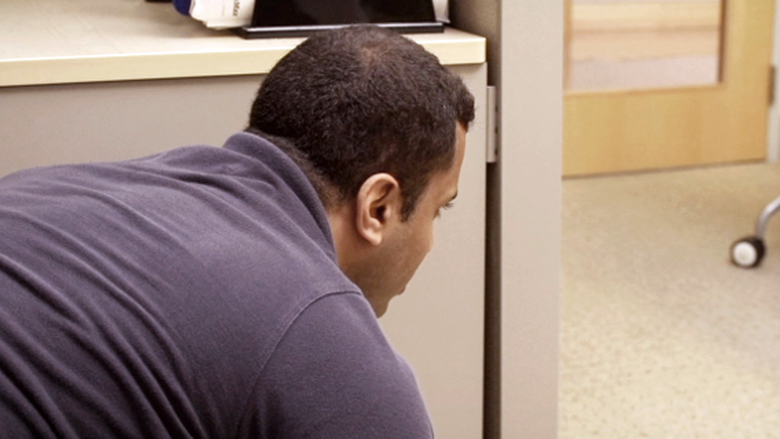
With new offices in Erie Hall, members of Penn State Behrend's Counseling Center team are connecting with more students at the college.
ERIE, Pa. — For any student, college is a transition: a shift in academic rigor, and to more independent living. That brings new opportunities, but also new challenges, both in and out of the classroom. There’s no map showing the best path forward. When students stumble — when they grapple with academic anxiety, or relationship issues, or they’re homesick — a visit to Penn State Behrend’s Counseling Center can help.
The office, in the new Erie Hall, offers 20-minute assessments for all students. Those sessions are used to explore any needs a student has and provide resources that can help.
The center also offers traditional and concise appointment options for those who would benefit from counseling services. There’s also red-light therapy, a massage chair and wellness programming, including drum circles, rock painting and meditation sessions.
By connecting to the Behrend Health Center and the programming staff at Erie Hall, the counseling team has developed a comprehensive approach to student support — a new Healthy Campus Initiative that incorporates elements of physical, mental and emotional health.
“We’re meeting students where they are, and we’re able to provide the resources and services that address their individual needs,” said Melissa Sulkowski, the center’s director.
Penn State News talked with Sulkowski about the new service model, the move to Erie Hall and the signs that a student might need help.
Q: What issues or challenges bring students to the Counseling Center?
Sulkowski: We see a lot of relationship issues — disagreements with roommates, trouble developing friendships and an overall feeling of loneliness. More recently, we’ve noticed students lacking confidence in ‘soft skills,’ such as problem-solving and decision-making. There’s also anxiety and homesickness — things that, from my perspective, would be expected. Students are in a time of transition and uncertainty. They are trying to navigate relationships in a whole different arena, and we have pulled them out of any comfort zone they had.
Q: How can a counselor help?
Sulkowski: A counselor can help a student determine what they need and provide resources to help them function in a healthy way. The students we see don’t always need individual counseling. Some just need a friend. Some might need to be out in nature. Some need to decompress — to paint, or garden, or walk. The college population tends to focus on the here-and-now. They’re worried about what’s in front of them. They aren’t necessarily looking to unpack something that happened to them when they were 12. Fortunately, we can support a range of needs.
Q: You introduced a new model for scheduling and appointments. Students now begin with a 20-minute consultation, instead of a traditional, 50-minute session. How has that helped?
Sulkowski: It’s given us a lot more flexibility. In the traditional model, with four counselors doing five or six sessions a day, we could see 20 to 24 students in a week. In the first week of this semester, using the new model, we were able to meet with 74 students. For the student, it lowers the commitment. It gives them a way to meet with a counselor and talk through not only what’s weighing on them but what they need as a whole person.
Q: At what point should a student seek help?
Sulkowski: It’s all about the baseline. It’s one thing to be stressed, or to feel anxious or sad. The gauge, for me, is when that disrupts your ability to function day-to-day. If you have stopped going to class, if you are isolating in your room and are not socializing with friends, a counselor can help you come up with a plan to address that.
Q: The Counseling Center moved to the new Erie Hall when that facility opened in 2023. How has that helped?
Sulkowski: It allows us to be intentional the minute a student comes into our office. We can be proactive in the ways we try to bridge emotional and physical health. By playing pickleball or walking on a treadmill or taking a stretch-and-breathe class, students can reset their mind-body connection. That can help in so many ways.
Robb Frederick
Director of Strategic Communications, Penn State Behrend


